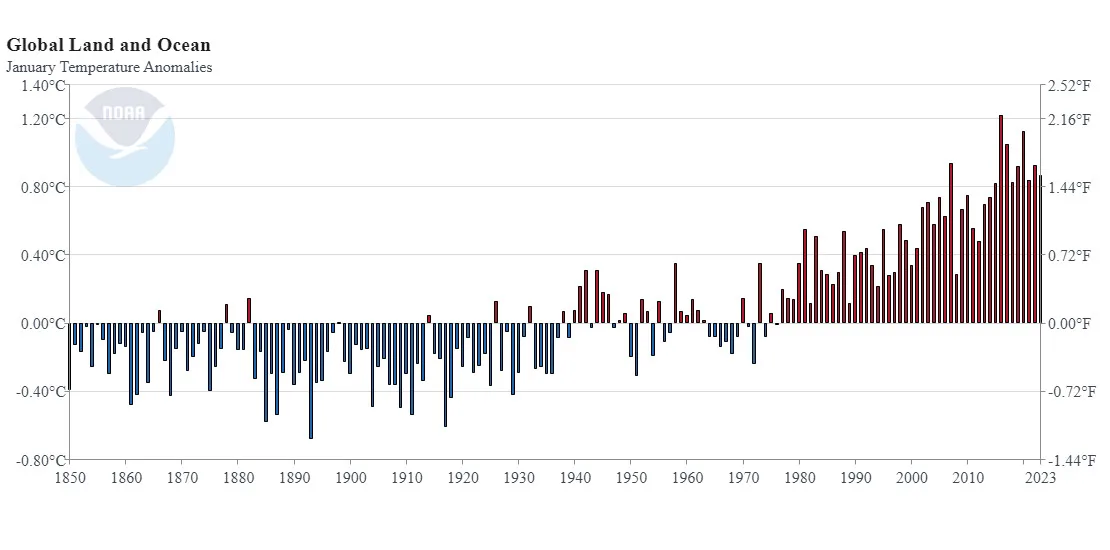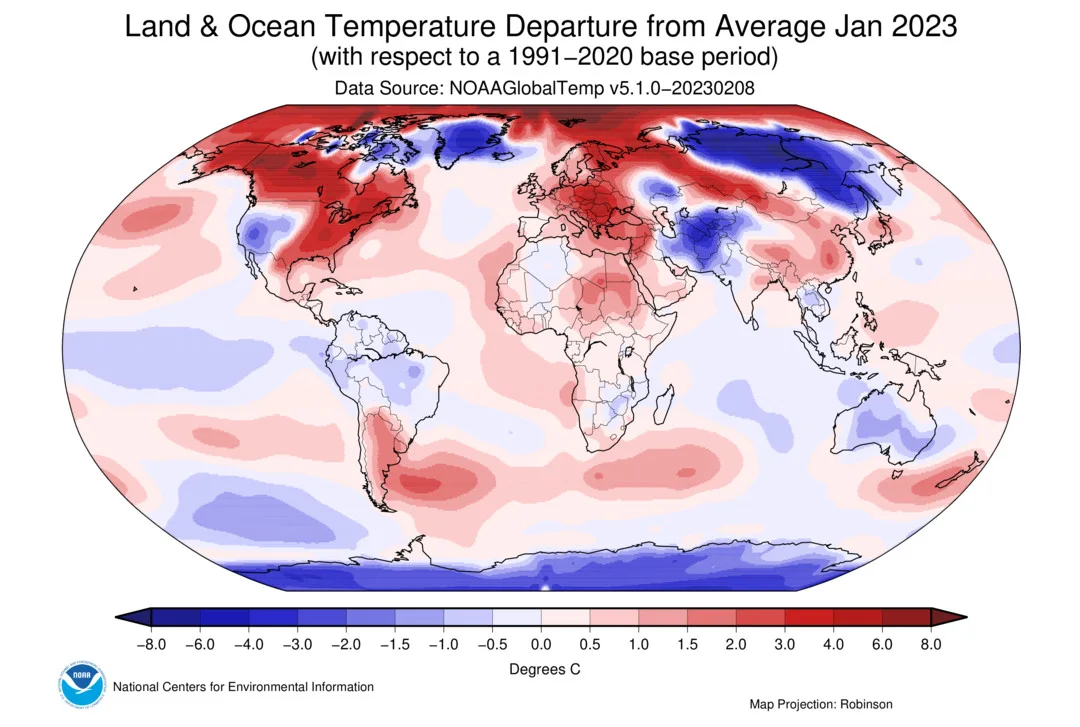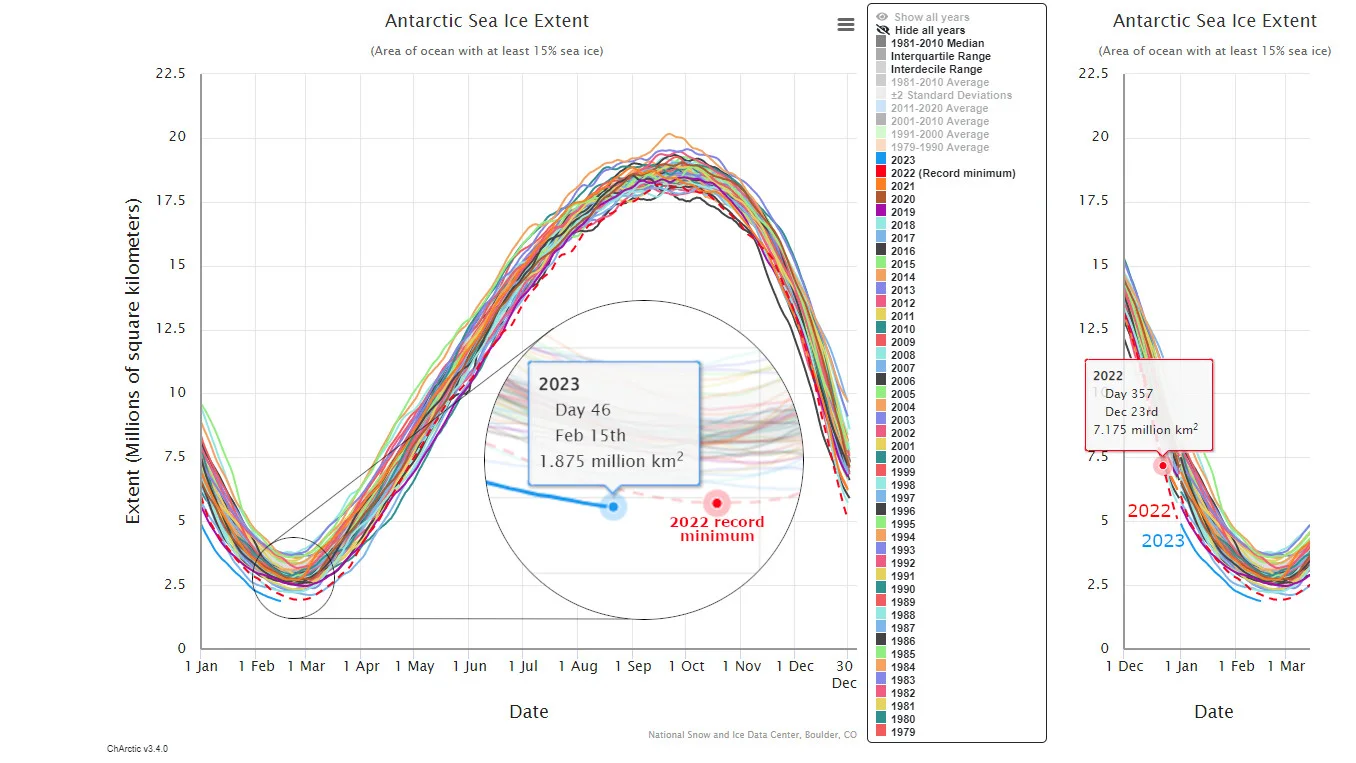
Canada was a global climate hot-spot in January
Temperatures across Canada were well above normal for the start of the year.
Despite La Niña’s cooling influence on the planet throughout January, mild weather across Canada turned the country into a global hotspot for the month.
According to NOAA and the Copernicus Climate Change Service, last month ranked as the 7th warmest January on record for the entire globe.

This graph plots global average temperatures for January 1850-2023, relative to the 20th century average of 12.0°C. While January temperatures have been on the rise since the early 1900s, January 2023 ranks as the 7th warmest in the 173 year record. (NOAA NCEI)
From NASA’s records, it was the 6th warmest month of January, while the Japanese Meteorological Agency ranked it as 4th warmest in their dataset.
However, even as the northern hemisphere was in the midst of winter, several regions experienced unusually warm temperatures. The Arctic was up to 6°C warmer than normal for this time of year. Eastern Europe, as well as northern and central Russia, also had very mild weather.

This map plots January 2023 temperature anomalies, with respect to the 1991-2020 average, revealing the global hot and cool spots for the month. (NOAA NCEI)
Canada, along with the eastern United States, ranked as a global hot spot for the month.
According to data from Environment and Climate Change Canada, temperatures across much of Canada were 2-6°C above normal. In the Yukon, Yellowknife was an average of 7°C warmer than normal for the month, while a monitoring station in Otter Falls recorded a monthly average more than 8°C warmer than ECCC's 1981-2010 climate average.

Warm northern winter — cool southern summer
Meanwhile, as summer prevailed in the southern hemisphere, temperatures across Antarctica were some of the coldest for the month, relative to normal.
Despite this, Antarctic sea ice reached its lowest extent ever recorded, breaking the previous record set just last year.

This graph of Antarctic sea ice extent (measured in millions of square kilometres) shows that it was below the historic minimum even in mid-December, and by mid-February had reached a new record low. (NSIDC)
“This year represents only the second year that Antarctic extent has fallen below two million square kilometers,” the NSIDC stated in their Feb. 14 update. “In past years, the annual minimum has occurred between February 18 and March 3, so further decline is expected.”
Indeed, as of Feb. 21, 2023, the ice extent around Antarctica fell to just 1.788 million square kilometres, and there is likely at least a few more days to go in the melt season before ice begins to grow back again.
Watch below: 2022 was one of the hottest years on record
Thumbnail image: This closeup of NASA's GISTEMP Seasonal Cycle graph shows how the global average temperature from January 2023 stacked up against all records going back to 1880, relative to the seasonal cycle average from 1980-2015.












